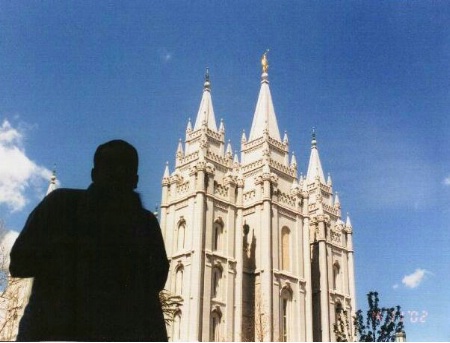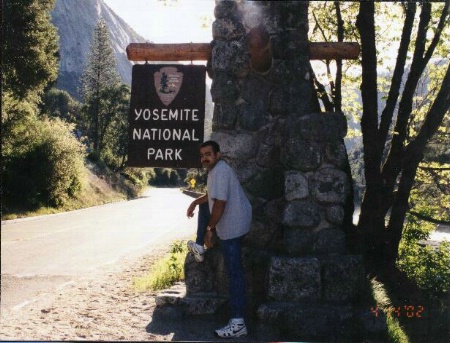
Sam Sam |
|
Subject Dark in Shadows
Hi,
I have the Olympus ZLR. The photos are great indoors. But outdoors, when there is good sunshine and I stand in the shade to take pictures, then the items/persons in the shade are too dark and the items/persons in the bright light are okay. I have used flash at all times and still find the subject in the shade to be dark. Please help.
April 20, 2002
|
|
|
John A. Lind |
|
Sam,
If some of the people are in shade and some are in direct sunlight, you are asking the impossible from your camera and flash. The difference between the two can easily be upward of three stops. Those in direct sun will either be blown out, or those in the shade will be grossly under-exposed. Even "fill flash" for the shade will not work well under these conditions. Why? It's filling and adding the same amount of light to everyone; those in the shade and those in the sun. The solution is avoiding these situations. If you're positioning people (posing them) either get them *all* in the shade and use fill (better) or all in the sun (second best as there's greater risk of squinting from the bright sunlight). One of the better times for photographing people outdoors is on an overcast day without the very harsh shadows and very bright light from direct sun. Otherwise, I look to place them in open shade (on the shaded side of a building, wall, etc. with open sky above).-- John
April 19, 2002
|
|
|
Sam Sam |
|
|
|
|
|

Too dark
With Flash on
Sam Sam
|
|
|
|

Whats going on
With Flash on
Sam Sam
|
|
|
|
Thanks for the reply John. I think you will understand my question if I post a couple of snaps. Please take look at the following two pictures. I really appreciate your help.
April 20, 2002
|
|
|
Piper Lehman |
|
Sam, the problem seems to be that you are trying to shoot a scene with two extremes in exposure. Get closer and meter off the person in the shade if you want this area to be exposed correctly. Your camera is "averaging" the two extremes of light and dark and trying to get the "in between" from both areas. If you have a center-weighted meter, use it. It will put more emphasis on the middle subject area (usually 70/30 ratio, as opposed to matrix/averaging, which I think you have used in the example shots). Getting closer to your shaded subject will give even the matrix/average meter a better idea of what you deem important to expose for. You might still have to choose, and by this I mean that to get the shaded area right, the sunny area might burn out (be completely white). Excluding the sunny area will fix your problem, I think.
April 20, 2002
|
|
|
John A. Lind |
|
Sam,
Yes, there is too much difference in the lighting to capture it all. There are a bit different than I had envisioned from your description. In the first, the Yosemite photograph, your flash cannot fill that far away. As Piper mentioned, your metering is trying to average everything and you get something between the two extremes. I don't know which direction the sign is facing. If you're not on the north side of the sign, there may be a time of day with sun illuminating the sign and subject (on the north side, the sun will never illuminate it). The only other solution goes well beyond what all but pros with a crew and van loaded with equipment would do using large reflectors to fill the shaded area.On the second, I don't know how far away you were from the subject. It may be the flash didn't even fire even though it was turned on, as the building and sky are so brightly lit. If it did, it's likely it didn't put out that much light due to brightness from the rest of the scene. The eye and brain see differently than film (or a digital CCD) does. Part of that difference is the eye's ability to span a much greater range of highlight and shadow brightness value. In scenes such as the second one, sihlouettes of people can work (unless you're deliberately trying to make them recognizable). Several suggestions:
When doing photographs such as these, ask yourself if you want a photograph of the person, the landscape or both. If it's the person, move in closer to get better fill to bring the ratio of light and dark closer, but don't worry about matching them completely. Get the focus and exposure for the person. Let the landscape become a non-distracting backdrop. If it's of the landscape, then don't worry about it if they sihlouette (it may be desirable). Think about their position as an element in the scene along with focus and exposure for the landscape. If it's intended to be of both, don't make them compete with each other for lighting or composition. Look for methods to have the people interacting with something in the scene to "connect" the two together. Get the people into the same level of illumination and make them part of it (which may require a different time of day). -- John
April 20, 2002
|
|
|
Sam Sam |
|
Thanks for the tips. I will experiment a little more and get back.
April 21, 2002
|
|
|
Hermann Graf |
|
When the subject which comes too dark is within the range of your flash, you can set your flash manually (taking into account guide number, distance (camera/subject), and film speed), and then shoot with flash. If possible, rotate your flash directly to the subject, if it is not within the axis of your camera lens.
April 22, 2002
|
|
|
|
Log in to respond or ask your own question.
|